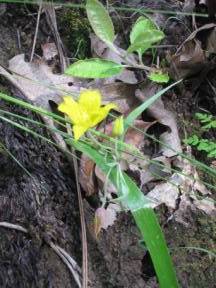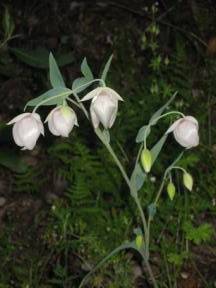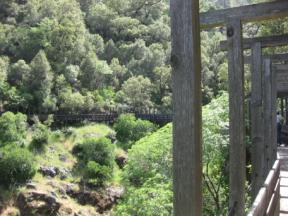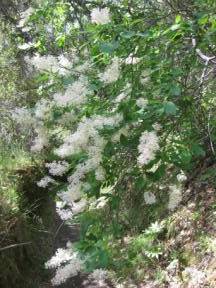| E-Mail Forum | |
|
|
|
| Nevada City Weekend May 16, 2010 |
|
|
We have been in Nevada City since Thursday at the 2010 California Preservation Conference sponsored by the California Preservation Foundation. The conference was split between Grass Valley and Nevada City, which are only about three miles apart. I’ve never spent any time before in either place, and both were a pleasant surprise. Timber and mining were the economic mainstays of the area for 100 years until well into the 1950s, when hard times hit. Both towns have revived and continue to prosper thanks largely to cultural tourism. All of the conference sessions I attended on Friday were related to tourism, and I brought home lots of ideas that can be used in Richmond. I’ve talked about cultural tourism and heritage tourism before, which focuses on a region’s culture and history. Both tend to attract visitors that spend more, stay longer and support a wide range of local businesses, including the arts. There is a even new “tourism” tag called “geotourism” that is more regional approach. Sierra Nevada Geotourism (www.sierranevadageotourism.org) is a new project of the National Geographic Society, the Sierra Nevada Conservancy and Sierra Business Council to capture the history and heritage of the Sierra Nevada Region through an interactive Web site and print map. The Sierra Nevada Geotourism Project seeks to celebrate the Sierra Nevada as a world-class destination, while contributing to the economic health of the region by promoting sustainable tourism. History buffs and adventurers, backpackers and foodies, birders and sightseers can discover unique destinations based on recommendations from those who know best—residents of the Sierra Nevada. Authenticity is especially important in cultural, geo and heritage tourism. Some Sierra Nevada cities, such as Truckee, have been hit hard by the recession while Nevada City and Grass Valley have held their own. The difference, say the experts, is how the latter have maintained their authenticity and ambiance. They also work hard at promotion. The Nevada City (population 3,000) Chamber of Commerce has more members than the Richmond Chamber of Commerce and hundreds of volunteers that act as docents for visitors and maintain web sites and social networking sites promoting the city. The city has a business improvement district (BID), an effort that went down in flames when Point Richmond tried it several years ago. Richmond is gaining a higher profile in the preservation community these days. Almost everyone knows about the Ford Assembly Plant and the Civic Center rehabilitation, and even outside the preservation community, Rosie the Riveter WWII Home Front National Historical Park is increasingly familiar. Not all was “school,” however. We attended a reception Thursday evening at the Bourn Estate at Empire Mines State Historical Park in Grass Valley where we ran into the mayor of Nevada city, Reinette Senum, who has long ties to Point Richmond. On Saturday, we hiked the Independence Trail, a truly amazing footpath that follows a 25-mile long flume and ditch built in 1859 to bring water to a remote area for hydraulic mining. Because its grade is so flat, it is wheelchair accessible for a couple of miles. The wildflowers were amazing especially the Fairy Lantern (Calochortus albus), also known as White Globe Lily and the Yellow Star Tulip (Calachortus monophyllis). The honey-sweet smelling Ceonothus integerrimus was in full bloom, and we had a hard time identifying it as a ceonothus since the leaves are so different from other Ceonothus species. Below, left to right: Calachortus monophyllis, Calochortus albus, Independence trail and Ceonothus integerrimus
Last stop was at the remote South Yuba River State Park where the longest wooden covered bridge in the U.S. resides. It was built in 1962 and was the beginning of the Virginia Turnpike, a toll road to Virginia City that hosted a hundred wagons a day in the gold and silver boom days.
|
|
|
|



